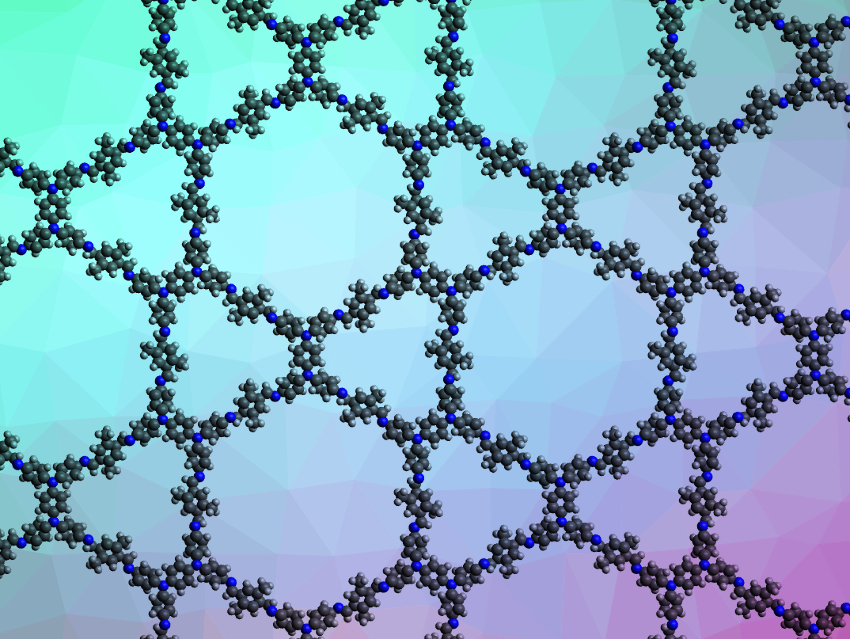Covalent organic frameworks (COFs) are porous crystalline materials consisting of organic building blocks. They have applications, e.g., in catalysis. COFs have, for example, been used as photocatalysts for water splitting, CO2 reduction, or the degradation of organic pollutants. Photocatalysis can also be used for sustainable H2O2 synthesis via the reduction of molecular oxygen, but no COFs that catalyze this reaction had been reported so far.
Arne Thomas, Technical University of Berlin, Germany, Pascal Van Der Voort, Ghent University, Belgium, and colleagues have designed and synthesized two new 2D COFs based on (diarylamino)benzene units that can be used for photocatalytic H2O2 production. The team synthesized the two COFs, called TAPD-(Me)2 (pictured) and TAPD-(OMe)2, from N,N,N‘,N‘-tetrakis(4-aminophenyl)-1,4-phenylenediamine (TAPD) and 2,5-dimethylbenzene-1,4-dicarboxaldehyde or 2,5-dimethoxybenzene-1,4-dicarboxaldehyde, respectively. These building blocks are connected via imine bonds in the COFs.
Both TAPD-(Me)2 and TAPD-(OMe)2 are highly crystalline and form a Kagome (kgm)-type lattice (pictured). The layers stack in an eclipsed arrangement. Both COFs provide large surface areas and show strong absorption of visible light. The team performed photocatalytic H2O2 generation experiments with ethanol as both electron and proton donor under visible light irradiation. They found that both COFs are stable, show a high H2O2 production rate, and are reusable. Overall, the developed COFs provide a method for metal-free, solar-driven H2O2 generation.
- Strongly Reducing (Diarylamino)benzene-Based Covalent Organic Framework for Metal-Free Visible Light Photocatalytic H2O2 Generation,
Chidharth Krishnaraj, Himanshu Sekhar Jena, Laurens Bourda, Andreas Laemont, Pradip Pachfule, Jérôme Roeser, C. Vinod Chandran, Sander Borgmans, Sven M. J. Rogge, Karen Leus, Christian V. Stevens, Johan A. Martens, Veronique Van Speybroeck, Eric Breynaert, Arne Thomas, Pascal Van Der Voort,
J. Am. Chem. Soc. 2020.
https://doi.org/10.1021/jacs.0c09684




